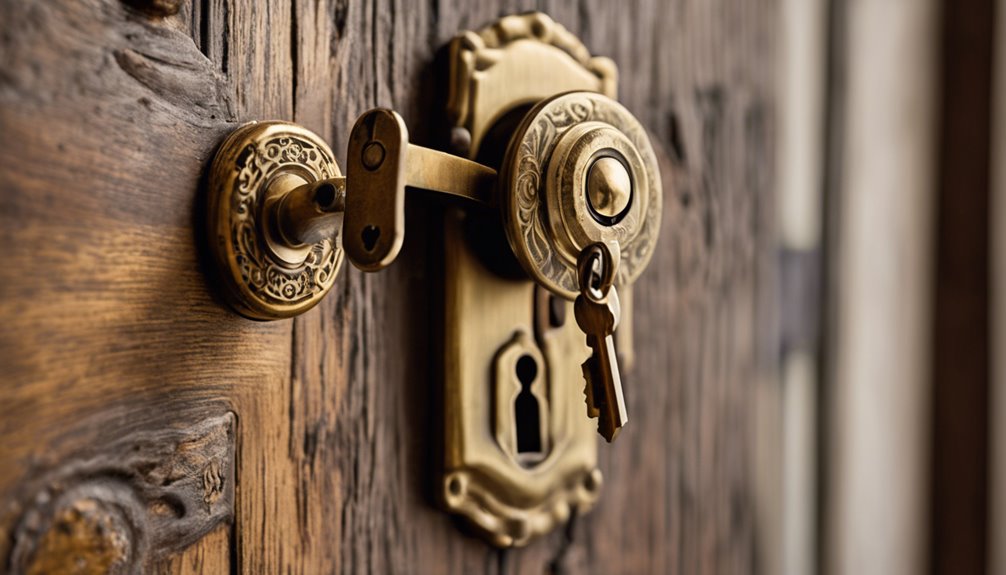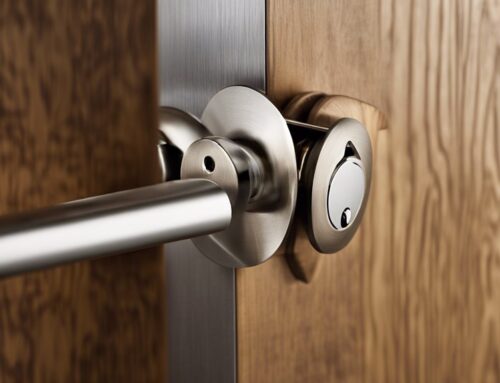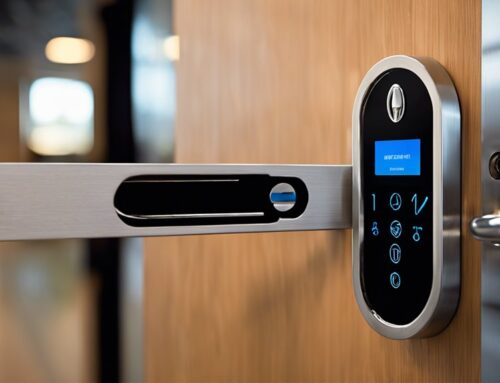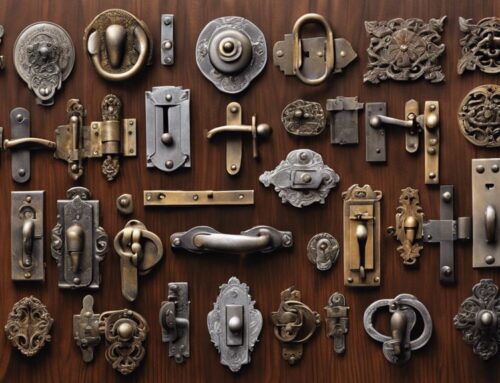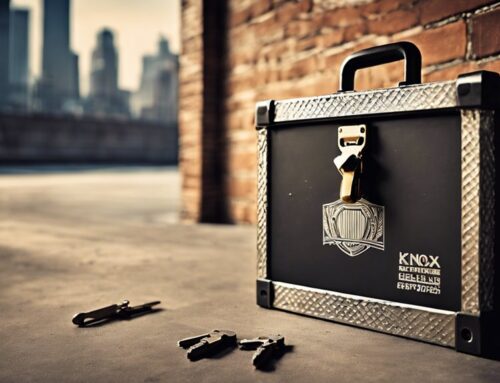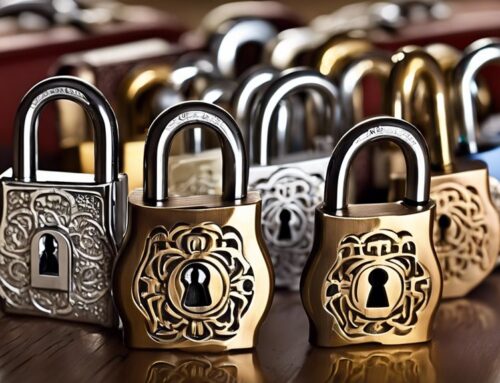The lever tumbler lock is a silent guardian, standing watch over your most valued possessions. You’ll find that understanding its mechanism reveals much about the evolving nature of security throughout history. From ancient civilizations crafting their first locking systems to modern applications in high-security environments, these locks have held significant importance. As you explore their components and historical context, you might wonder how the intricacies of these simple yet effective devices have shaped not just security practices, but also trust in societies around the world.
Key Takeaways
- Lever tumbler locks operate using levers that align with a bolt, preventing unauthorized entry if any lever remains lowered.
- Originating in ancient civilizations, they marked a significant advancement in security technology and resistance to picking.
- Their design simplicity facilitates ease of manufacturing and promotes locksmith accessibility, shaping modern locking systems.
- Enhanced resistance to unauthorized access, multiple levers, and unique key designs contribute to their legacy in security.
- They influenced safety regulations in commerce and personal property, establishing principles for complex locking mechanisms.
Mechanism of Lever Tumbler Locks
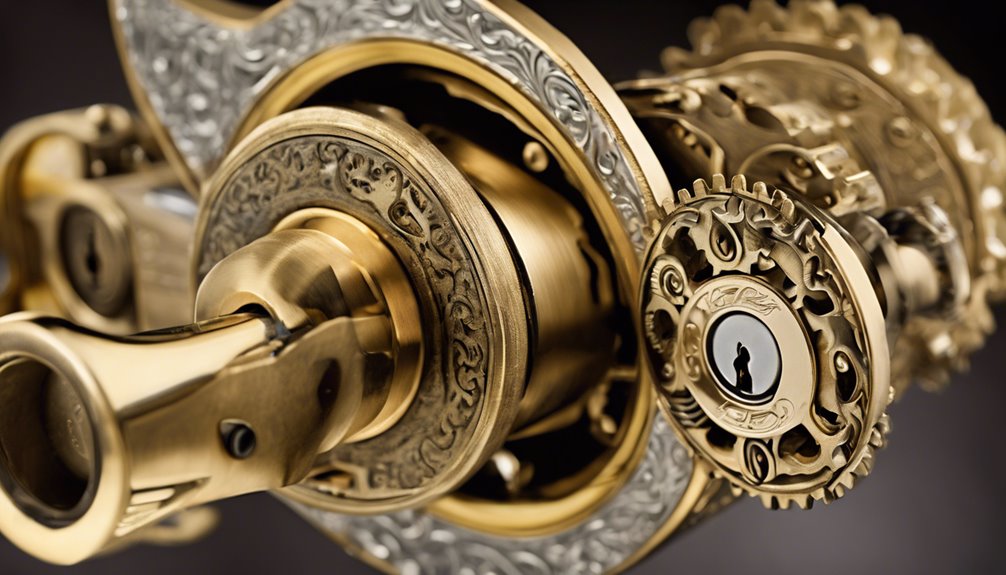
Lever tumbler locks operate using a straightforward yet effective mechanism that relies on a series of levers to secure a door.
When you insert the correct key, it raises the levers to a precise height, aligning them with a bolt mechanism. Each lever has a notch that corresponds to the key’s cuts, ensuring they reach the required position simultaneously.
If even one lever remains lowered, the bolt won’t retract, preventing unauthorized entry.
This design minimizes wear and enhances security; the force needed to manipulate the lock without the key is substantial. Additionally, these locks offer a good balance between cost and overall security effectiveness, making them a popular option for homeowners.
As a result, you’ll find that the lever tumbler lock balances simplicity with robust functionality, making it a reliable choice in both residential and commercial applications.
Components of Lever Tumbler Locks
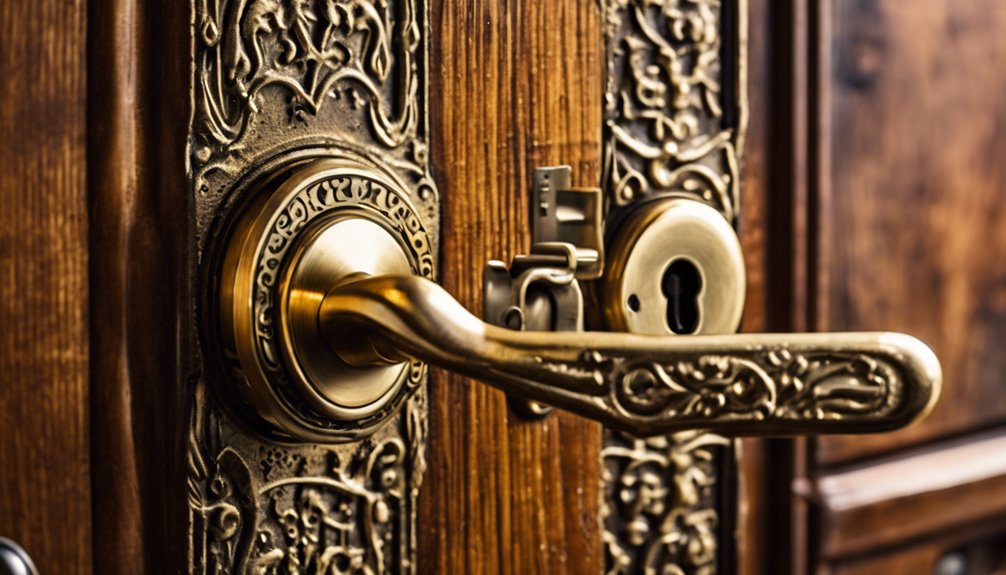
The effectiveness of lever tumbler locks stems from several key components that work in unison to create a reliable security system.
Understanding these parts is essential for mastering their function:
- Levers: Basic moving parts that interact with the bolt.
- Tumbler Pins: These pins need proper alignment to disengage.
- Bolt: The part that secures the locking mechanism when engaged.
- Key: Custom-fitted to lift the levers to the correct height.
- Housing: The outer casing that contains and protects the internal mechanisms.
Each component is engineered for precise interaction, ensuring that the lock’s integrity remains intact.
Familiarizing yourself with these elements enhances your ability to diagnose issues and improve security measures effectively.
Historical Significance of the Lock
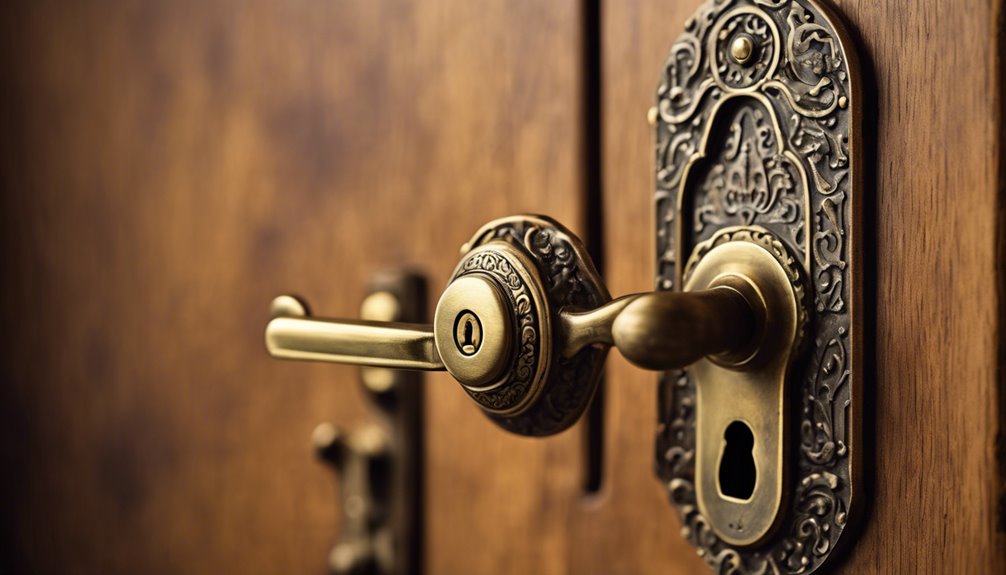
Although many might overlook the historical significance of lever tumbler locks, they represent a critical advancement in security technology. Originating in ancient civilizations, these locks improved upon earlier mechanisms by incorporating levers that offered enhanced resistance to picking. You’ll find that their design enabled artisans and locksmiths to craft intricate systems that were both secure and durable. As you explore the progression of lock technology, you’ll see how these locks laid the groundwork for modern locking systems, influencing the development of complex safes and alarm mechanisms. Additionally, the evolution of lever tumbler locks paved the way for high-security locks, which provide greater protection against unauthorized access.
Their introduction not only marked a shift towards more reliable security solutions but also contributed to societal changes by promoting trust and safety in commerce and personal property throughout history. Furthermore, these historical innovations demonstrate the importance of security upgrades to ensure optimal protection in contemporary times.
Types of Lever Tumbler Locks
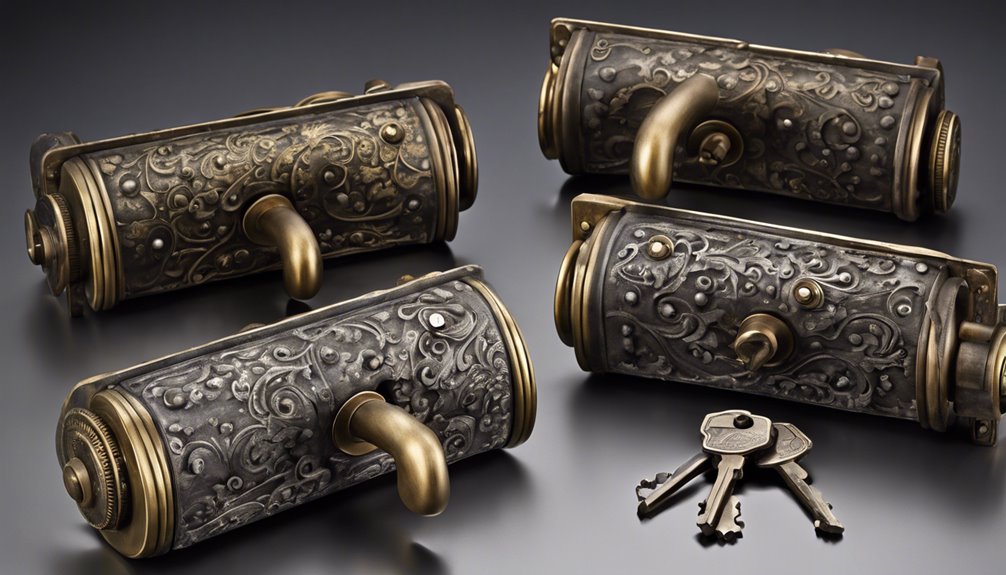
Different types of lever tumbler locks cater to various security needs and applications.
Understanding these variations enables you to select the right lock for your specific requirements.
- Single Lever Lock: Basic design suitable for low-security applications.
- Double Lever Lock: Offers enhanced security by requiring two separate levers to align.
- Sliding Lever Lock: Features sliding levers for more complex mechanisms, deterring tampering.
- Combination Lever Lock: Integrates a numeric dial for increased security alongside lever mechanisms.
- High-Security Lever Lock: Utilizes advanced materials and intricate designs, ideal for safes and secure facilities.
Comparison With Other Lock Types
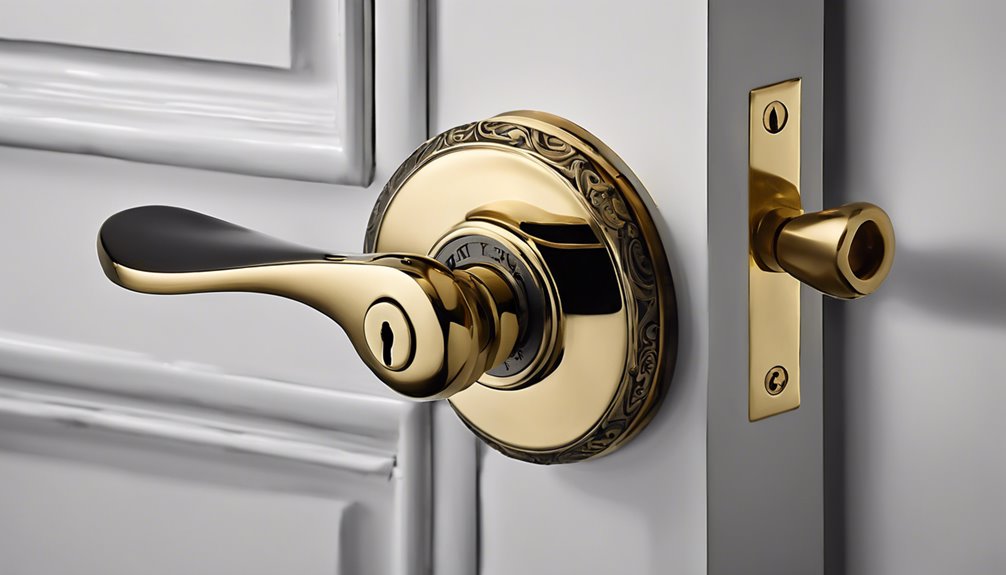
When considering security solutions, lever tumbler locks stand out, but how do they stack up against other lock types?
Compared to pin tumbler locks, lever locks are generally easier to operate and offer a more straightforward mechanism, which can simplify key cutting. However, they can be more vulnerable to bypass techniques due to their design. A well-secured door and deadbolt combination can deter unauthorized entry effectively, as 60% of burglaries occur through front or back doors.
On the other hand, disk detainer locks provide higher resistance against picking, offering enhanced security but at the expense of complexity in manufacturing and operation.
Electromechanical locks introduce advanced electronic security but require consistent power supply and can be costly.
In addition, security solutions can vary significantly in their suitability based on intended use and user needs, highlighting the importance of evaluating different options before making a choice.
Ultimately, lever tumbler locks excel in reliability and ease of use, making them suitable for applications where user access is prioritized over high-security environments.
Security Features of Lever Locks
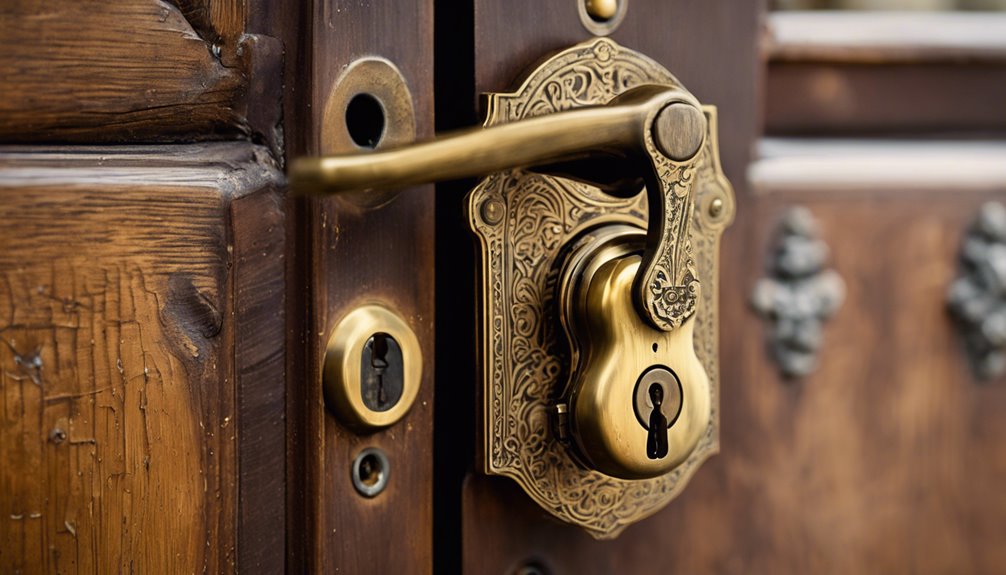
While lever tumbler locks provide a robust combination of simplicity and functionality, their key security features greatly improve their effectiveness. Understanding these features can help you appreciate the reliability of this lock type:
- High Resistance to Picking: The complex arrangement of levers makes it considerably harder for lockpicking tools to manipulate.
- Material Durability: Often constructed from hardened steel or brass, these locks resist physical attacks, much like high-security deadbolts which enhance overall home security.
- Multiple Levers: A greater number of levers increases the complexity and security level.
- Key Variability: Unique key designs guarantee a lower chance of unauthorized duplication.
- Anti-Saw Designs: Modern versions incorporate features to resist sawing attempts, further bolstering security.
Additionally, the interaction of lock pins and tumblers plays a crucial role in the overall security of lever locks by ensuring that only the correct key can align the levers properly. Embracing these characteristics provides you with a deeper understanding of lever tumbler lock security.
Modern Applications and Use
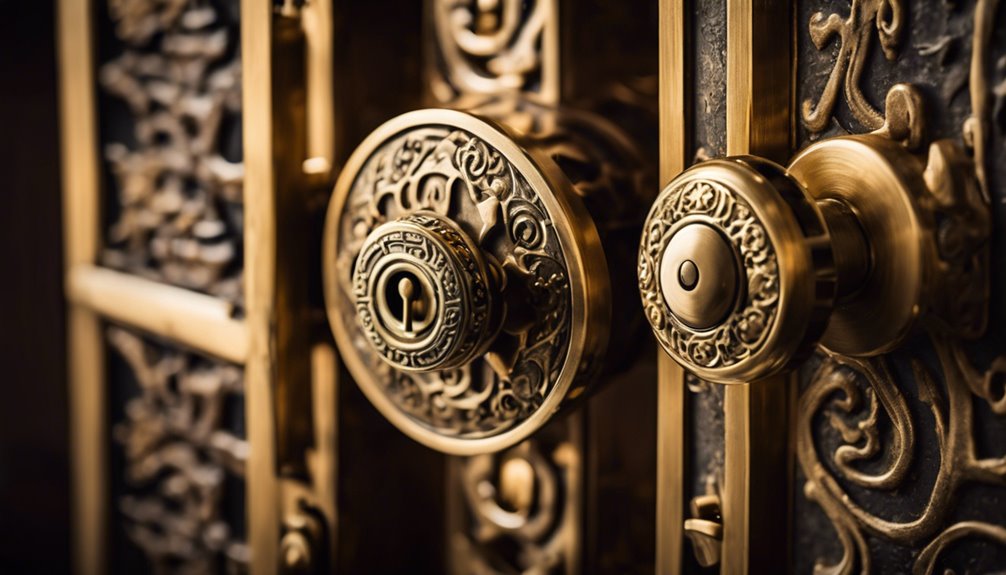
Today, lever tumbler locks are integral to contemporary security solutions, offering robust protection for both residential and commercial properties. Their versatile locking mechanisms allow for seamless integration into various security systems, adapting to diverse user needs. As you explore their modern applications, consider how these locks enhance security while maintaining ease of use. Additionally, many modern variants come equipped with anti-drill features, ensuring that they provide a formidable barrier against unauthorized entry. This added protection is particularly vital in high-risk environments, where higher-grade options such as high-security locks may be necessary to deter potential break-ins.
Contemporary Security Solutions
As security needs evolve, lever tumbler locks have adapted to contemporary applications, integrating with advanced technologies to enhance protection.
Today, these locks often combine traditional mechanisms with digital enhancements, ensuring reliability without sacrificing security. Digital keyless locks provide advanced technology that further supports these modern applications.
Here are some modern applications where lever tumbler locks excel:
- Commercial Access Control: Integrates with electronic systems for employee access management.
- Smart Home Security: Pairs with home automation systems for remote locking and releasing.
- High-Security Safes: Utilizes dual-locking mechanisms for sensitive documents and valuables.
- Hospitality Industry: Offers keyless entry solutions for hotels and resorts.
- Automobile Security: Provides reliable locking systems for vehicles, enhancing anti-theft measures.
Moreover, these locks can be part of a broader system that includes integrating with smart home systems to further enhance security features.
Versatile Locking Mechanisms
Lever tumbler locks showcase remarkable versatility, allowing them to be tailored for various applications beyond traditional uses.
You’ll find these locks integrated into high-security environments like banks, where their complexity deters tampering. In addition, they’re prevalent in industrial settings, securing machinery and storage units to guarantee safe operations. With the implementation of high-security locks, these environments can prevent break-in attempts with hardened steel bolts.
The modular design enables customization, accommodating specific security needs while maintaining user-friendliness. In residential applications, you might see them in front doors or safes, blending aesthetic appeal with robust security. Moreover, when combined with electronic elements, they can form hybrid systems that bolster access control. This adaptability not only enhances security but also meets the demands of contemporary architectural designs, making lever tumbler locks a sophisticated choice for diverse environments.
Additionally, while they provide substantial protection, adopting hybrid lock systems can further optimize security by integrating both smart technology and traditional mechanisms.
Maintenance of Lever Tumbler Locks
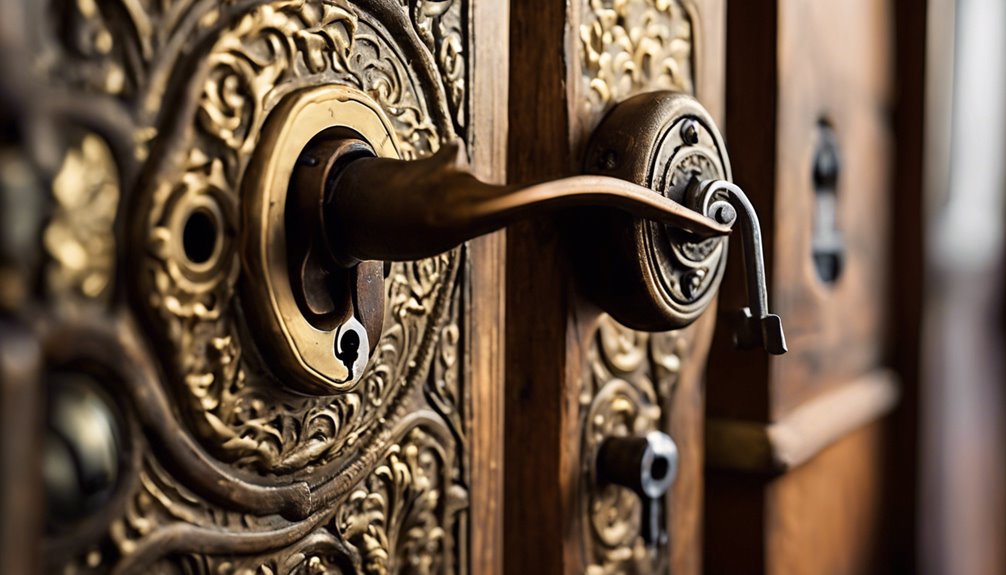
Proper maintenance of lever tumbler locks is essential for guaranteeing their longevity and reliable operation.
To keep your locks functioning efficiently, follow these steps:
- Regularly lubricate internal mechanisms using graphite or silicone-based lubricants. Additionally, consider using essential tips to keep your locks rust-free.
- Inspect the key regularly for wear or damage, replacing it if necessary to prevent additional strain on the lock.
- Clean the exterior with a soft cloth, ensuring no dirt or debris enters the lock.
- Check alignment frequently; misalignment can cause sticking and malfunctioning.
- Test the lock periodically to guarantee smooth engagement and disengagement of the tumbler mechanism.
Additionally, it is advisable to use essential tools when performing any in-depth lock repairs or maintenance.
Adhering to these guidelines not only enhances performance but also prolongs the life of your lock, safeguarding your assets effectively.
Legacy and Future of Lever Locks
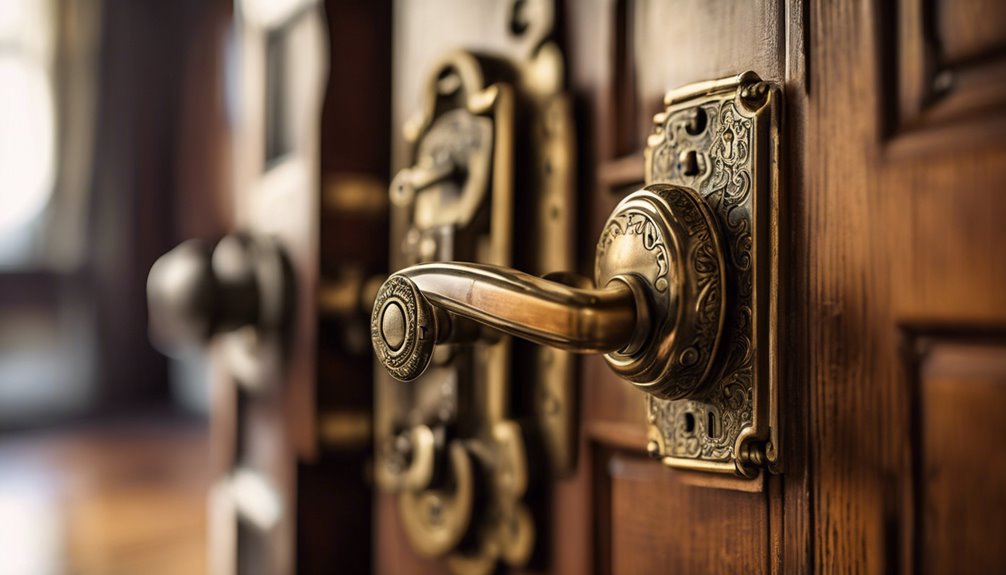
As you explore the legacy and future of lever locks, consider their historical impact on security systems.
Innovations in design have transformed traditional mechanisms, enhancing reliability and user convenience.
Looking ahead, it’s crucial to evaluate the emerging challenges and opportunities that will shape the evolution of these locks in modern applications.
Historical Influence on Security
Throughout history, numerous innovations have shaped the security landscape, yet few have held as significant an impact as lever tumbler locks. Your understanding of their historical influence is vital for appreciating their development and continued relevance.
These locks revolutionized security practices by providing:
- Enhanced resistance to picking
- Simplicity in design and manufacture
- Greater accessibility for locksmiths
- Versatile applications in various settings
- A foundational model for modern locking systems
Lever tumbler locks haven’t only protected valuables but also influenced legislation and safety protocols.
As you dive deeper, you’ll discover how these innovations forged the path for complex security mechanisms, reinforcing their legacy in contemporary and future design practices. Understanding this history is essential for any serious locksmith or security professional.
Modern Innovations in Design
While many security devices have evolved over the years, lever tumbler locks have undergone remarkable innovations that enhance their functionality and security. Today, modern designs incorporate advanced materials and precision engineering, improving both durability and resistance to tampering.
| Innovative Feature | Description |
|---|---|
| Anti-drill Plates | Reinforces protection against drilling. |
| Key Control System | Limits the distribution of duplicate keys. |
| Smart Lock Integration | Combines traditional locks with electronic access features. |
These innovations not only bolster security but also cater to users’ growing demands for convenience. As you explore modern lever tumbler designs, you’ll appreciate how these enhancements provide a superior blend of traditional craftsmanship and contemporary technology.
Future Prospects and Challenges
The evolution of lever tumbler locks has established a solid foundation for their future, but challenges lie ahead as technology continues to advance.
As you explore this intricate field, consider the following prospects and challenges:
- Integration with smart technology
- Resistance to digital tampering
- Balancing tradition with innovation
- The need for skilled craftsmanship
- Environmental concerns in production
Lever tumbler locks must adapt to the demands of modern security while maintaining their historical integrity.
The fusion of mechanical designs with digital interfaces will present opportunities for innovation, but it’ll also require ongoing research and development.
Embracing these challenges will be essential if you aim to guarantee the relevance of lever tumbler locks in an increasingly competitive security landscape.
Frequently Asked Questions
What Materials Are Commonly Used to Make Lever Tumbler Locks?
You’ll commonly find lever tumbler locks crafted from durable materials like brass, steel, and zinc alloy.
Brass provides excellent corrosion resistance and a smooth operational feel, while steel enhances strength and security.
Zinc alloy, often used in housings, balances cost and durability.
Additionally, the levers are typically made from hardened steel or brass for resilience.
Understanding these materials allows you to appreciate their performance and longevity in locking mechanisms.
How Are Lever Tumbler Locks Different in Design From Electronic Locks?
Imagine a key opening a treasure chest; that’s the essence of lever tumbler locks.
In contrast, electronic locks operate on circuits and digital codes.
Lever tumbler locks utilize physical keys to lift pins within a mechanism, creating a tactile experience steeped in tradition.
Meanwhile, electronic locks rely on batteries and microprocessors for access, embodying modern convenience.
You’ll find the distinction lies in the simplicity of mechanical design versus the complexity of electronic systems.
Can Lever Tumbler Locks Be Rekeyed or Adjusted?
Yes, lever tumbler locks can be rekeyed or adjusted.
You’ll need to access the lock cylinder to change the tumblers, guaranteeing they align with your new key profile. This process involves removing the lock from its housing, carefully disassembling it, and replacing the existing tumblers with new ones suited to the new key.
For precise adjustments, you might also fine-tune the spring tension to guarantee smooth operation, maintaining security and functionality.
What Are the Cost Factors for Installing Lever Tumbler Locks?
When you’re weighing the costs of installing lever tumbler locks, think of it as crafting a finely-tuned instrument.
The total expense hinges on factors like lock quality, installation complexity, and location. Premium locks might carry a higher price tag, while skilled labor adds to installation costs.
Don’t forget additional expenses like security features and customization options, which can elevate your overall investment, ensuring your security system plays a reliable tune for years to come.
Are There Any Notable Brands Specializing in Lever Tumbler Locks?
When it comes to lever tumbler locks, several notable brands stand out.
You’re likely to encounter manufacturers like Medeco, known for high-security options, and Yale, recognized for their reliability and innovation.
If you’re looking for custom solutions, companies like Abloy offer advanced security mechanisms.
Each brand specializes in various aspects like durability, pick resistance, and ease of installation, ensuring you find a lever tumbler lock that meets your specific security needs.
Conclusion
To sum up, lever tumbler locks are more than just a means to secure your belongings; they’re a demonstration of centuries of innovation and trust in security. You might be surprised to learn that the same principles protecting a modern bank vault have roots in ancient designs. As you safeguard your property today, remember that each click of the lever is a nod to history, blending simplicity with high security—a coincidence that reflects both our past and present together.

